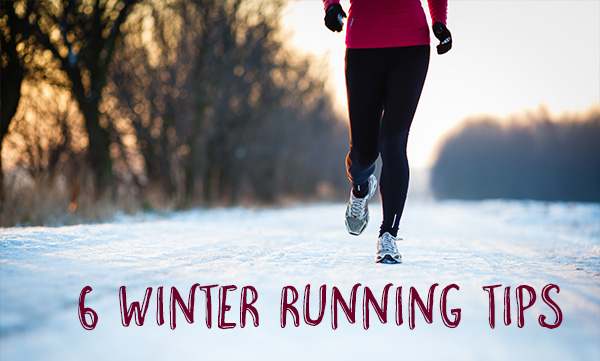ONLY $4.99 Shipping: Flat Rate Economy Shipping*
Free Shipping: Free Economy Shipping is available on orders over $100*
* Free Shipping is only available to valid addresses located in the contiguous U.S.
* Some exceptions apply
Come, run along with us as we share our joy of everything running.

We’re heading into what is popularly called “the second half” of Winter, and while many runners are finding themselves impatiently waiting for spring to come, others are saying, “forget about it” and running regardless of the weather. And while this is great, it’s important to take all the precautions you can to stay safe and healthy when running in the winter.
01. Dress appropriately: While you want to wear extra gear, such as gloves, hats, arm sleeves, warmer socks, and hats, you also don’t want to overdress, as you will run the risk of overheating. Experts advise that runners dress as if the actual temperature is 15 degrees higher than it actually is – a good gauge of whether or not you are dressed properly for a winter run is whether or not you feel chilly when you head out. That’s the sweet spot – you should neither feel warm nor too cold. It may take some time to find the right combination, and you may have to add or remove layers a couple of times before you find the right combination of gear.
Gloves are a really important part of any runner’s winter gear, no matter what. Your fingers are susceptible to the effects of the cold, and cold fingers are not only unpleasant, but it could be dangerous – especially in conditions extreme enough to cause frostbite. Nobody wants that.

These gloves have special touchscreen-compatible fingertips that allow you to use your touchscreen phone or iPod™ without having to take your gloves off. (Praise to whoever invented that… taking gloves on and off in winter was always such a massive hassle!)
Headwear is also important. If your head is cold, you will be cold. We have a ton of gear designed specifically to help keep you comfortable in the winter weather. Most of this gear not only helps to keep you warm, but is also made from a moisture wicking material that helps keep you dry when you sweat.

2. Hydrate! A lot of runners and athletes forget to hydrate when running or playing sports in cold weather, thinking it isn’t as important as it is in the summer. That is false – any time you are engaged in strenuous activity and will be sweating, you run the risk of dehydration, so bring your usual water or sports drink with you when you head out on a winter run, as well, and remember to drink. If you don’t replace the fluids you lose, you run the risk of under-performing, at a minimum, or becoming ill, in a worst case scenario.
3. Take Some Extra Time to Warm Up: You may want to gradually warm up and add an extra 5 to 10 minutes of warm-up time (perhaps a brisk walk or jog) before starting your run. When it is cold, your body needs the additional time to acclimate to the weather. By fully warming up, you minimize the risk of injuries or strains, and are also more comfortable during your run than you would be without being fully warmed up.
4. But Also, Take the Time to Cool Down: Much as you do in warmer weather, your cool down routine is just as important in the winter, so no matter how tempting your warm house (or even warmer shower) sounds, don’t skip this important step of every run
5. Windy? Run Toward the Wind: You’ll thank yourself on the way back, when the wind is at your back and you’re already sweating from your run. Sometimes, it really is the seemingly little things!
6. Run During the Middle of the Day: If you can, running between noon and 3pm is ideal, since the sun will be at its highest point and provide some warmth, but also, you will be more visible. That said, if you can’t – or need to stick to your early morning or after-work running schedule, be sure to wear bright and reflective clothing, or even better, LED light hats, bracelets, or clips that will make it much more difficult for drivers to see you when it is still dark out.
The most important thing to remember when running in the winter is your safety is the most important thing to keep in mind. If the roads and sidewalks are covered in ice and snow, or there are other dangerous conditions, it may just be a day to hit your treadmill (or the one at the gym) or do an aerobic video online that you like. You’ll still get your workout in, but without putting yourself in unnecessary danger. That said, if you use caution and dress appropriately, there’s no reason most winter days should bring your training – or your love for running – to a full stop.